
Untitled Document Dissection, Biology labs, Squid
Squid have a large mantle, eight arms with two longer feeding tentacles all with suckers, a beak and mouth, a siphon, a large head (with a brain), two large eyes, and three hearts. The tentacles are long and retractable and have suckers only at the tips. Their large eyes are very similar in structure to people's eyes.
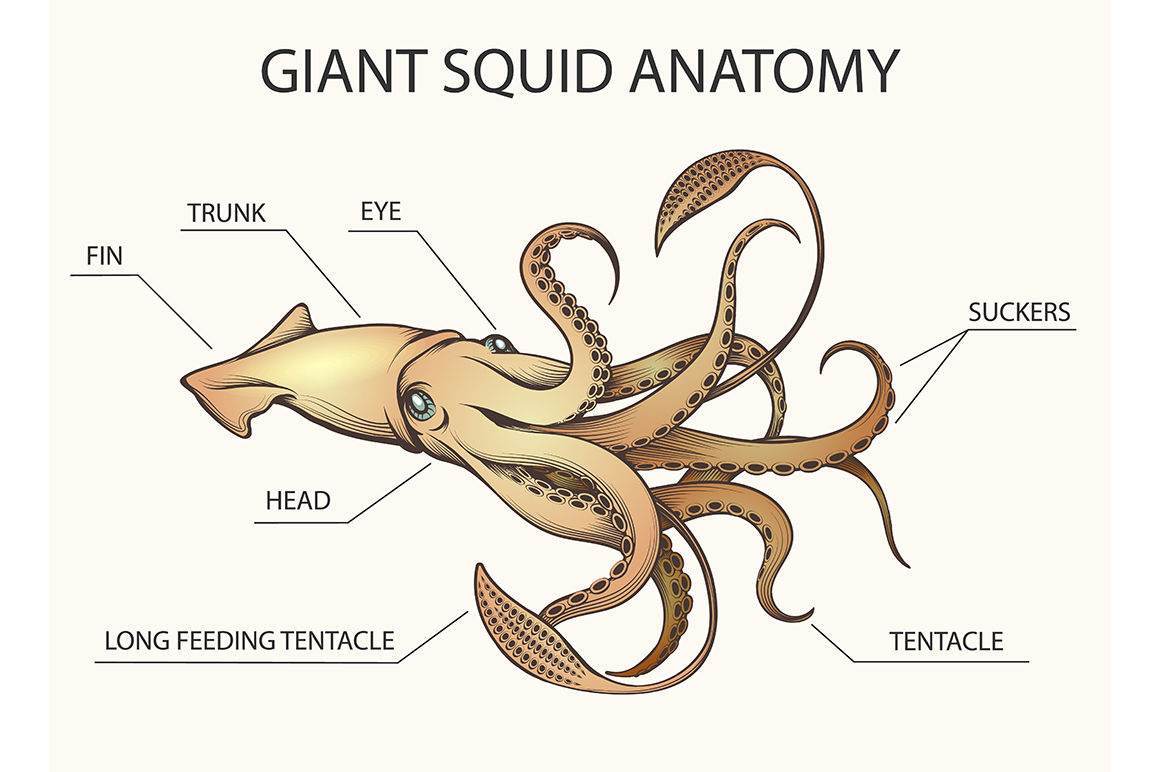
Giant Squid Anatomy Illustration By Olena1983 TheHungryJPEG
Virtual Squid Dissection This page can be used as a substitute for a hands-on squid dissection. Students without access to squid, or who were absent the day of the dissection can view photos of the squid and complete the lab guide. Step 1: Examine the External Anatomy of the Squid

Squid Labeled Diagram
Diagram of basic squid features. Squid are cephalopods of the two orders Myopsida and Oegopsida. The two current orders comprise around 304 species. Like all other cephalopods, squid have a distinct head, bilateral symmetry, a mantle, and arms. Squid, like cuttlefish, have eight arms arranged in pairs and two, usually longer, tentacles.

Printable Squid Diagrams Dissection 101 Diagrams
Squid are actually mollusks, although they look much different from their relatives the gastropods ( snails), and bivalves ( clams).Unlike other mollusks, which have a hard outer shell, squid have a soft outer body and an inner shell. Squid are part of the class Cephalopoda (meaning "head-footed"), a group that also includes the octopus, cuttlefish and nautilus.

Internal Squid Anatomy
Squid are soft-bodied molluscs whose anatomy evolved to adjust and conform to an active predatory way of life. The head and foot of the squid are at one end of a slender body, and this endpoint is functionally anterior, guiding the shrimp as it travels through the water.
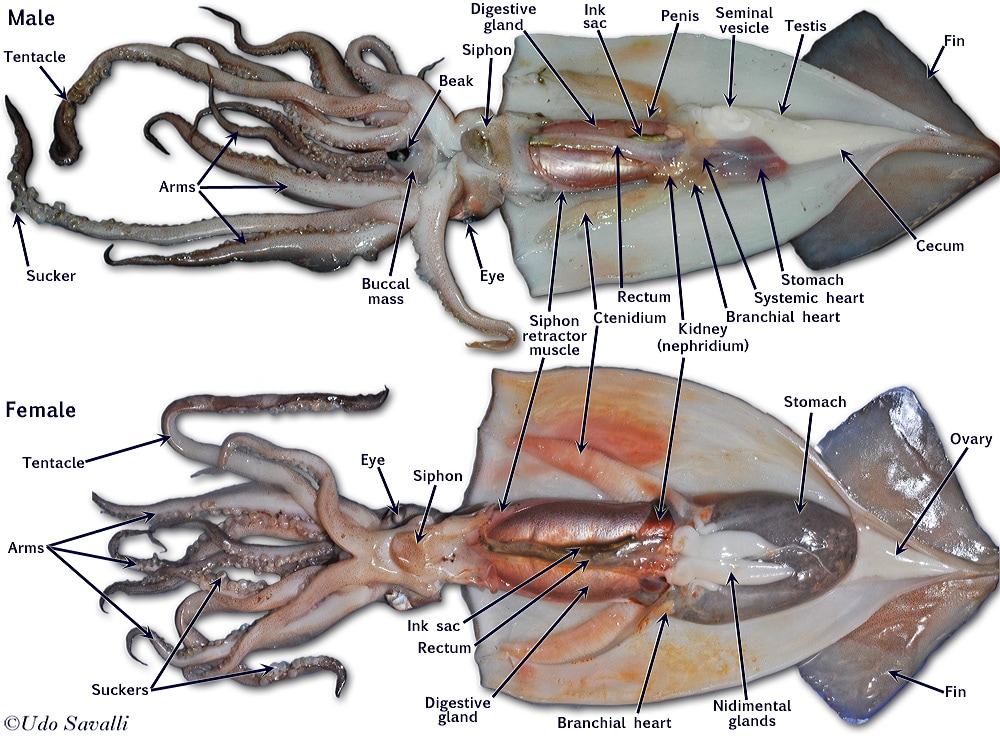
Squid Dissection Sights + Sounds
While squid are color blind, they do have excellent eyesight. They are able to see both in the shallow water and deeper regions. They can see well in the day as well as during the night time. Squid have the ability to see in a range of 360 degrees too which is quite interesting. They call also smell quite well.
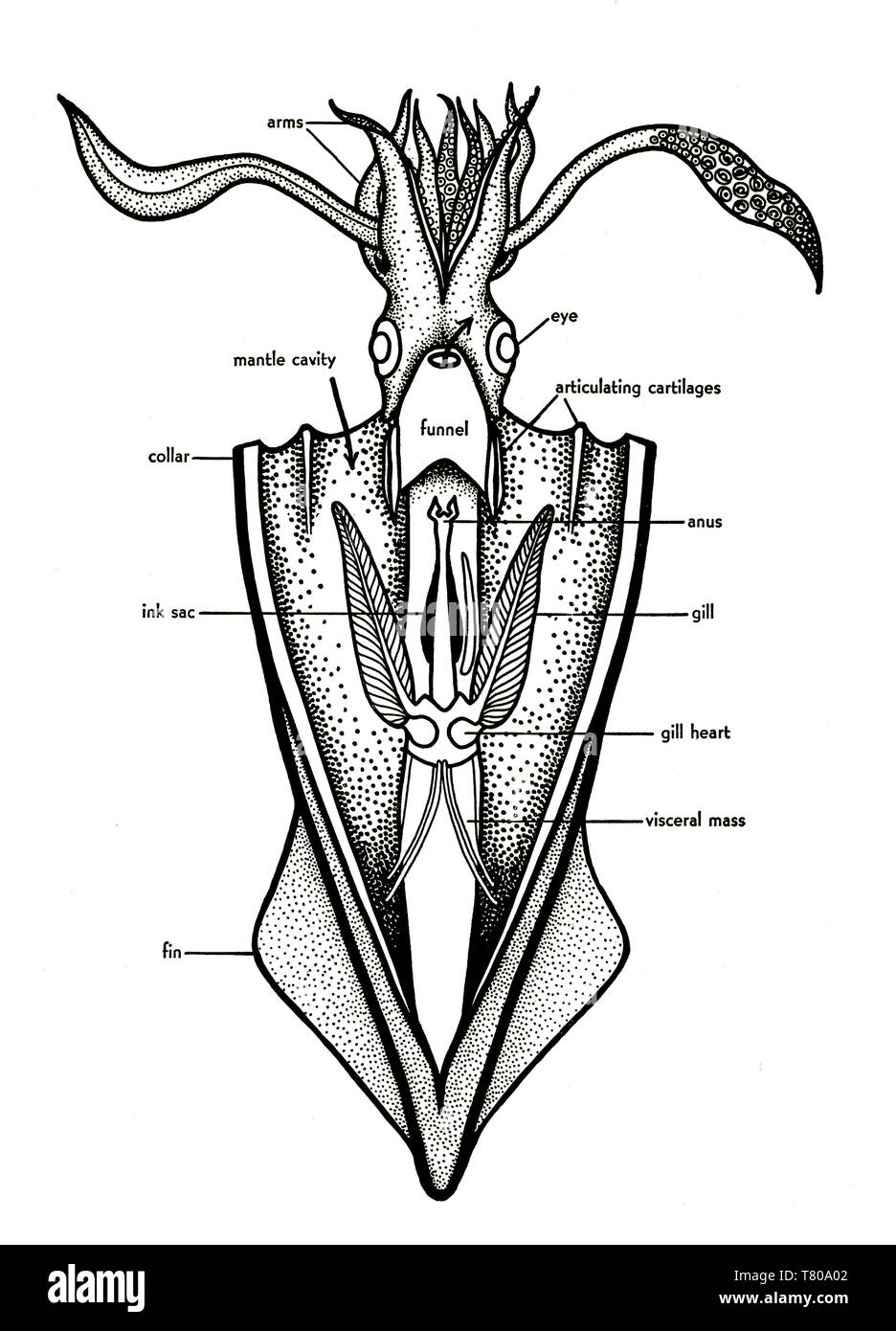
Diagram of Basic Squid Features Stock Photo Alamy
22 Magruder Road Fort Hancock, NJ 07732 732‐872‐1300 njseagrant.org SQUID DISSECTION OVERVIEW The students will be dissecting a squid to study this amazing animals adaptation so they can have a better understanding of living creatures. OBJECTIVES
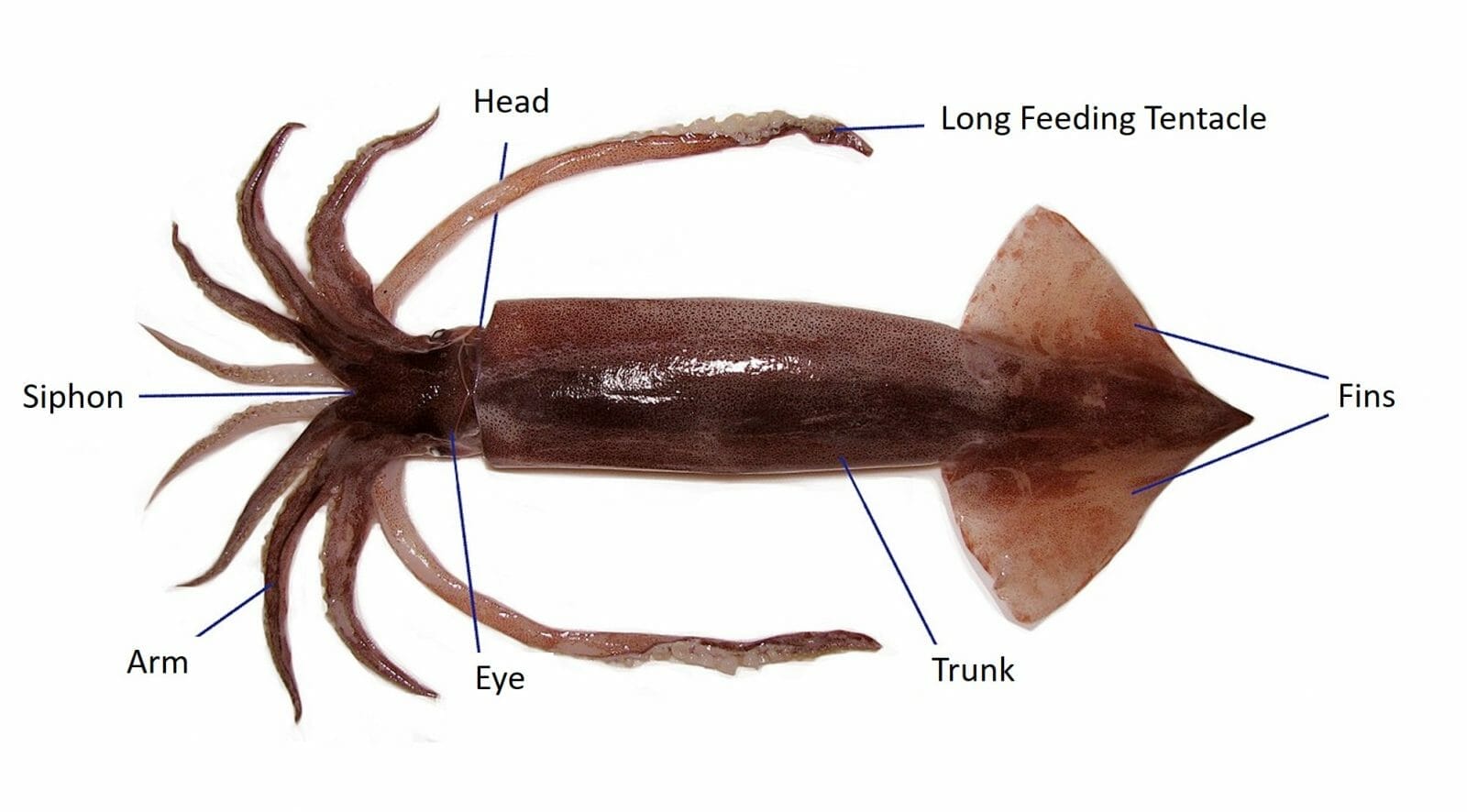
Squid Anatomy
Label Squid Diagram - EnchantedLearning.com. Label Squid External Anatomy Diagram Printout. K. ๖๓๓๑๐๒๔๓Koroket Hemchanan. Science Resources. Life Science. Science Notes. Kraken. Vet Tech School. Shark Facts. Squid Dissection Prelab Web Assignment.

Squid Dissection Labeling
Diagrams and Key: Structures to pin and label: Pin and label: 1=arm, 2=tentacle, 3=eye. The squid has two main parts: the mantle (with the fin) and the head region that a sketch of the external anatomy and label the internal anatomy of the squid. Squid are cephalopods with elongated bodies, large eyes, eight arms and two tentacles. .

Top 25 ideas about Squid dissection on Pinterest Mantles, Biology and
I developed this diagram for use with my students during our study of the squid within the phylum Mollusca.Use the labeled version during instruction and provide students with a copy of the u.
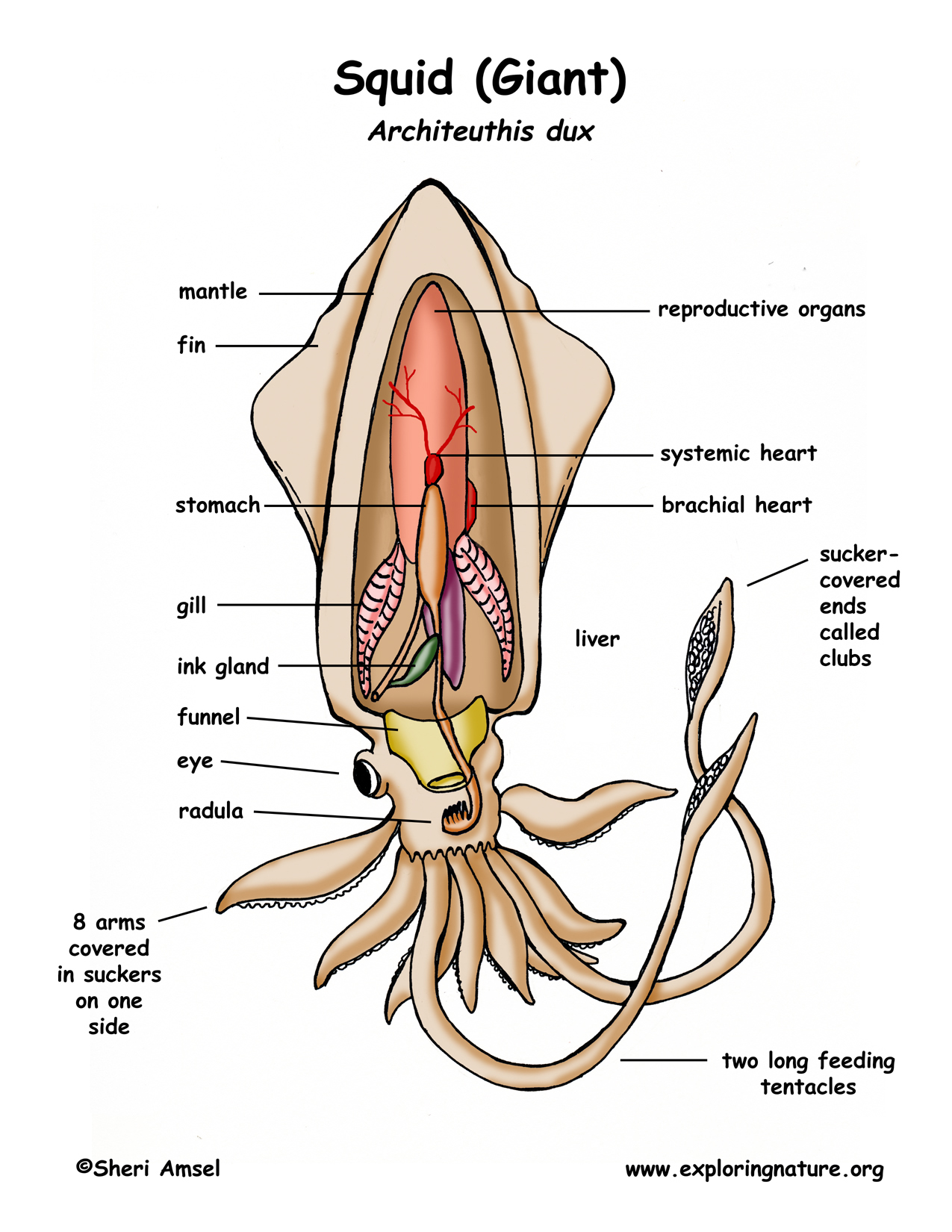
Squid (Giant)
Squid Dissection Teacher's Guide. Original Document: Squid Dissection. Squid can be purchased from biological supply companies, such as carolina.com or you can buy them at the grocery store packaged as frozen calamari. External Anatomy (Labeled) : Finding the Jaw . The beak should look like a bird's beak, with two sharp curved points. Analysis. 1.

Lesson 6 The Squid (Cephalopod) C.S.W.D
Lesson Summary FAQs Activities What is a squid classified as? Squid are not fish. They are classified as cephalopods, which are specific members of the Mollusca phylum. Squid belongs to the.
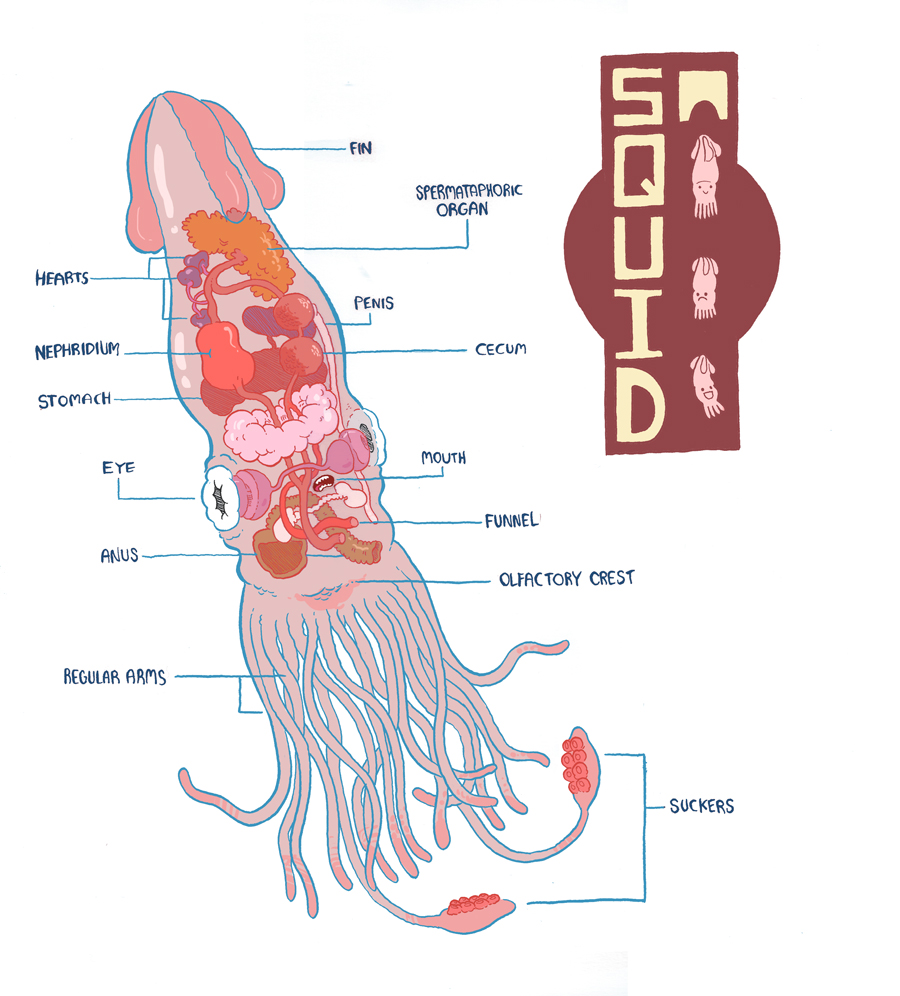
squid diagram by mrdynamite on DeviantArt
In this article we will discuss about the structure of Squid (Loligo) with the help of a diagram. 1. It is a marine mollusc commonly called squid. 2. Body is long, slender, pigmented and tapering behind. ADVERTISEMENTS: 3. A fin is present along its postero-lateral edges. 4. The shell is internal, feather-like and membranous. 5.
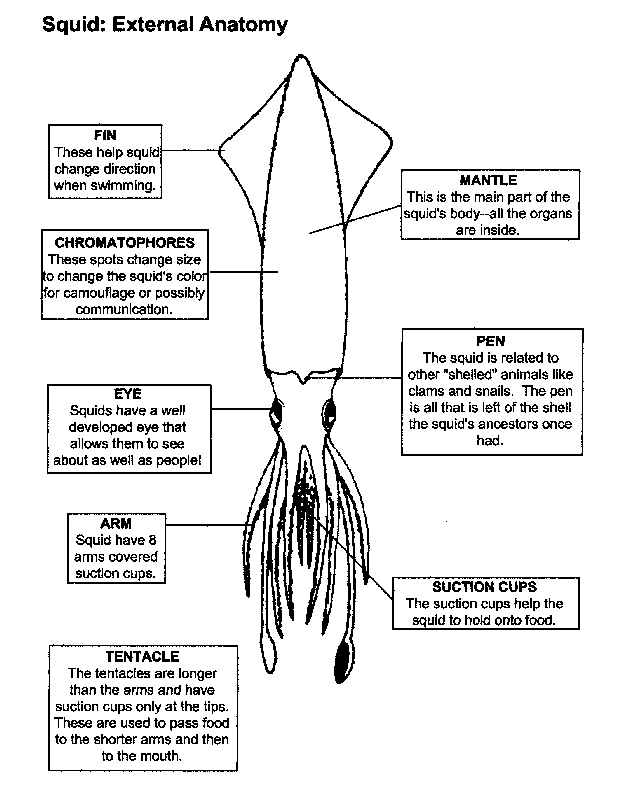
Mr. Jenkins' Summer 2012 Marine Biology Punahou School Squid
(Smithsonian Institution) Like octopods and cuttlefishes, giant squid have eight arms. But they use their two much longer feeding tentacles to seize prey. The tentacles have powerful suckers at the ends. More about the giant squid can be found in our Giant Squid featured story. Tags: Feeding Scientific illustrations Anatomy Predation

Lesson 6 The Squid (Cephalopod) C.S.W.D
Squid Anatomy Coloring Page. PDF for Printing Out. Click Here. Link to More Info About this Animal (with Labeled Body Diagram) Click Here. Learn to Draw this Animal. Click Here. Citing Research References. When you research information you must cite the reference. Citing for websites is different from citing from books, magazines and periodicals.

squid internal anatomy labeled
On the diagram below label the: Mantle, fins, siphon, eyes, arms, tentacles, mouth, club, and chromatophores. State the function of each. Squid Dissection: Internal Anatomy tor muscles, and gonad (label as ovary or teste). Funnel Retractor Muscle: during jet sion. Ink sac: ink for Gills: Remove from the water. nate Carbon Gill Hearts: to gills.